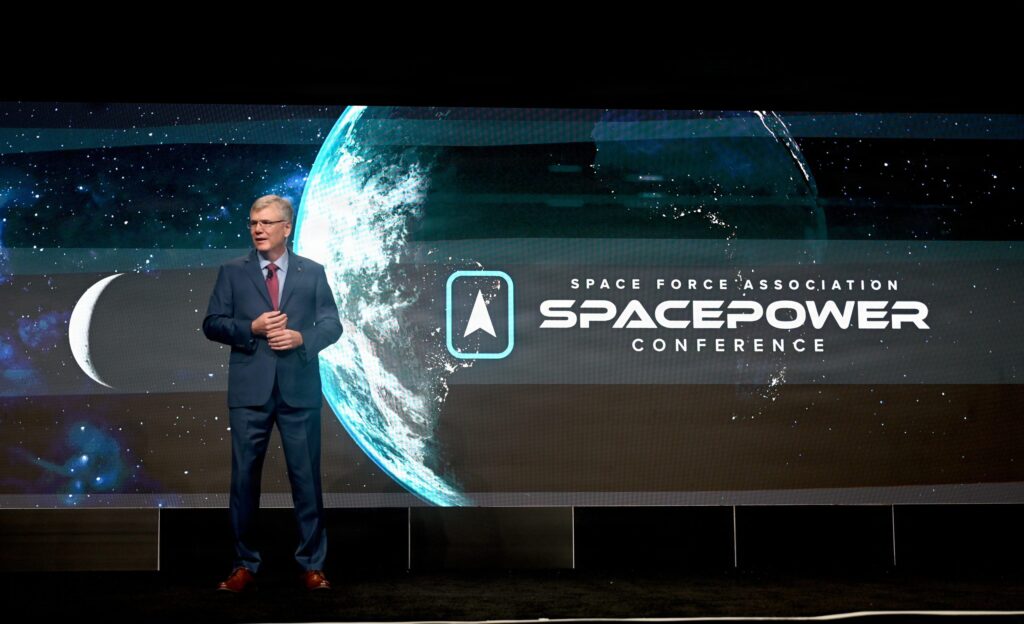Now Reading: China’s space ambitions hit a new gear
-
01
China’s space ambitions hit a new gear
China’s space ambitions hit a new gear


WASHINGTON — The United States is at risk of losing the strategic high ground that underpins modern military power, according to a sweeping new report that urges Congress to move quickly as China accelerates its bid to dominate space.
In its 745-page Annual Report to Congress scheduled to be released at a public event Nov. 18, the bipartisan U.S. China Economic and Security Review Commission lays out a blunt assessment of Beijing’s push to become the world’s top space power.
The commission, created by Congress in 2000, has long tracked China’s economic and military rise. This year’s edition says the speed, scale and ambition of China’s space program have entered a new phase that U.S. military leaders describe as “mind boggling.”
Space Force Gen. Chance Saltzman, the U.S. chief of space operations, used that phrase in testimony to the commission as he detailed a rapid expansion of Chinese space based systems designed to give Beijing an edge across peacetime competition and potential conflict. The report cites Saltzman’s warning that China’s growing arsenal of military space capabilities threatens the United States’ ability to rely on satellites for targeting, communications and surveillance, especially in a Western Pacific contingency where long distances and scattered U.S. forces depend on resilient networks.
“China’s rapid advancements in space capabilities should concern every American,” the commission writes. It stresses how deeply U.S. society depends on satellite services for GPS navigation, banking, weather forecasting and the power grid. Defense officials say that dependence remains underappreciated outside national security circles.
‘Dual use’ advantage
A central theme in the report is China’s advantage from an entirely dual use space program. Commercial ventures, state owned enterprises and the military operate as one system, allowing the People’s Liberation Army to pull commercial breakthroughs straight into military applications. That edge is most pronounced in counterspace technologies that can disrupt or disable satellites. U.S. commanders view them as tools China could use to blind or confuse the United States at the opening of a crisis.
The commission notes that Washington spent years avoiding the development of offensive space systems to sidestep accusations of weaponizing orbit. That restraint is fading as China treats space as a warfighting domain. The report points to the Space Force’s March 2025 warfighting framework, which puts space superiority at the center of U.S. planning, including offensive and defensive operations to protect critical satellites.
China’s recent advancements are extensive, the report states. Beijing has expanded commercial launch capacity, deployed early stages of mega constellations and built a global network of ground stations, all structured for easy dual use. It is also investing in quantum communication satellites for secure links, reusable spaceplanes, space based computing and AI, nuclear thermal propulsion for faster deep space missions and space based solar power that could beam energy to Earth.
The commission estimates that China has built a state directed commercial ecosystem in roughly a decade, with companies that look private but follow government priorities. This gives Beijing an industrial base that scales quickly and serves strategic goals. The report calls this a “formidable technological, economic and geostrategic challenge to the United States.”
China’s long term aim, the report says, is to steer international space governance, shape global standards and replace the United States as the world’s leading space power.
For Congress, the message is that falling behind in space would weaken U.S. national security, erode global influence and cut into American commercial strength in a growing space economy.
The commission recommends that lawmakers boost Space Force funding to achieve space control and space superiority. It also calls on the Pentagon to expand space wargaming, improve modeling and simulation of Chinese threats and deepen operator training on space warfare tactics.
Stay Informed With the Latest & Most Important News
Previous Post
Next Post
-
 012024 in Review: Highlights from NASA in Silicon Valley
012024 in Review: Highlights from NASA in Silicon Valley -
 02Panasonic Leica Summilux DG 15mm f/1.7 ASPH review
02Panasonic Leica Summilux DG 15mm f/1.7 ASPH review -
 03From Polymerization-Enabled Folding and Assembly to Chemical Evolution: Key Processes for Emergence of Functional Polymers in the Origin of Life
03From Polymerization-Enabled Folding and Assembly to Chemical Evolution: Key Processes for Emergence of Functional Polymers in the Origin of Life -
 04How New NASA, India Earth Satellite NISAR Will See Earth
04How New NASA, India Earth Satellite NISAR Will See Earth -
 05And Thus Begins A New Year For Life On Earth
05And Thus Begins A New Year For Life On Earth -
 06Astronomy Activation Ambassadors: A New Era
06Astronomy Activation Ambassadors: A New Era -
07SpaceX launch surge helps set new global launch record in 2024




















